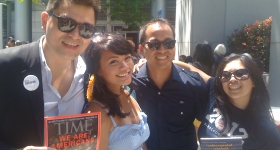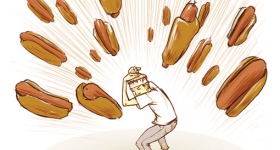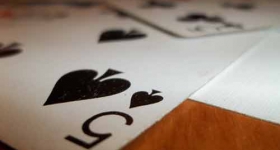Photo credit: Scott Breitinger
The hate crime against Dr. Prabhjot Singh in his local neighborhood of Harlem demands a deeper understanding of how youth and young adults are cultivating character in local multi-cultural and multi-faith communities. I believe Dr. Prabhjot Singh’s and Dr. Manmeet Kaur’s, Prabhjot’s wife, response to the hate crime illustrates how to further cultivate character in our communities by bringing our full selves to the table, including an emotional and spiritual abundance that is a gift in today’s world. They responded with a quiet calm, and a re-energized commitment towards their local community. As a community member, I experienced their response as a radical act of courage to subvert the dominant American narrative of punishment and consequences for a hate crime and choose to live out their spiritual faith in the world. Their compassion for the young men who attacked Dr. Singh mirrors the compassion Guru Nanak, the founder of Sikhism, exhibited during his lifetime emphasizing where authentic power lives: it lives in the type of relationship we foster with each and every person we meet in this lifetime. Will the relationship be based on compassion or fear?
This couple made a decision to believe in their local community members, specifically the young men who attacked Dr. Singh, despite what the facts presented. They believe in the human spirit and its capacity for change despite the young misguided men who resorted to violence as a way of securing “power” in a community. Most profoundly, they ignore the classifications that divide a community across religious, racial, and socio-economic lines and believe in the power of knowledge-transfer, compassionate relationships, and engaged participation amongst community members.
Their deliberate decisions and beliefs create a safe space in their local community for all community members to thrive. They are creating a community model of well-being that stems from claiming community as their own while also welcoming local community members to take ownership as well. I don’t believe they are being naïve or unrealistic about this response and the work involved to create this type of understanding and acceptance in local communities. They are giving their local community members permission to live in a place of authentic power and center themselves in compassion, empathy, and forgiveness. When we recognize this emotional location within all of us, we can transform our world.
This I believe is a paradigm shift away from how we are taught to hold power or what is perceived as power -- with a move towards a community-centered model that not only empowers ourselves but also everyone around us. Everyone counts in this model.
Their response reminds me of my son’s preschool. Sidak Singh, a boy who wears a topknot of hair and a patka, a small turban, enters his school every morning to find his best friend Alex, an African American boy, and the two of them in turn go and look for Luna, a Latina girl. They are inseparable. While I am identifying them by their racial and faith identities, they do not, simply seeing one another as Sidak, Alex, and Luna: friends to play trains with, play soccer with, dance to the Village People with, and live out their pre-school days peacefully with, with curiosity and compassion for one another. These children give one another the space to discover that inherent hope and faith they have in one another as friends -- and in the world around them.
The tenderness I see these children hold for one another is the same tenderness I see Prabhjot Singh and Manmeet Kaur hold for their local community of Harlem. These children and this couple are bringing something that cannot be seen to the table. It is felt, it is instinctually known, and it is what members of all ages in our communities look for -- that consistent presence of a full heart and releasing the contents of it unconditionally, without question in every moment possible. It is what allows preschool children to cheer one another on in a soccer game. It allows doctors in their local neighborhoods to look at his attackers through a lens that recognizes these young men as humane, thirsty for guidance and support. It is precious.
When Dr. Singh models this critical component of manhood -- a connection to an inner life where powerful and positive emotions live -- for the young men in his community, there is a vision for something different. There is potential to shift what we perceive as power defined by the world through control and force, to authentic power that lives deep within all of us. And when we as community members can help young men like the ones who attacked Dr. Singh understand their rage as a call out for something more -- when we can go deeper with these young men to understand what is beneath the rage -- we may find a yearning for purpose in the world, to find one’s way, a thirst for knowledge to know they too can make a difference in the community they belong to.










Comments